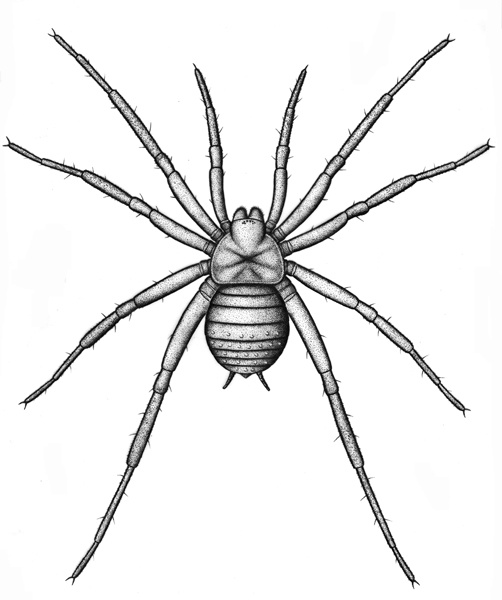The oldest spider ever found in Germany has been scientifically described. Named Arthrolycosa wolterbeeki this ancient creepy-crawly roamed northern Germany more than 300 million years ago (Carboniferous).
The fossils of this arachnid come from the Piesberg quarry near Osnabrück in Lower Saxony. They represent the first Palaeozoic spider found in Germany.

Arthrolycosa wolterbeeki
In a recent article published in the international journal Paläontologische Zeitschrift, Dr Jason Dunlop from the Museum für Naturkunde Berlin described this ancient arthropod. The spider is between 310 and 315 million years old and was named after its discoverer, Tim Wolterbeek, who generously donated the fossil to the Museum für Naturkunde Berlin.
The spider had a body length of about one centimetre and a leg span of about four centimetres. It was about the same size as a common Wolf spider (Lycosidae). It belonged to a primitive group of arachnids known as the mesotheles, which, in contrast to most spiders today, still have a segmented abdomen. Its living relatives are found only in eastern Asia.
The fossil reveals stunning details. The silk-producing spinnerets and even hair and claws on the legs have been identified.

One of Nature’s Big Success Stories
The Arachnida are one of nature’s great success stories. More than 50,000 species of spider have been described worldwide. About a thousand species live in Germany. Spiders are also preserved as fossils. More than 1,400 extinct species are known. It is thought the first spider-like, terrestrial arthropods evolved in the Devonian. These creatures rapidly diversified and thrived in the swamps of the Carboniferous. They became important predators of insects and other small invertebrates. Some giant forms evolved, although the classification of some specimens remains controversial. For example, Megarachne servinei from the Late Carboniferous of Argentina had a leg span in excess of fifty centimetres. Once thought to be a giant spider, it has been reclassified as a bizarre eurypterid.
To read an article from 2018 about the discovery of a Cretaceous-aged spider with a whip-like tail: A Tale of a Spider with a Tail.
The Piesberg quarry is an important fossil site and was declared a National Geotope in 2019. The location has yielded numerous fossils of plants, insects and other animals, including arachnids such as scorpions. This new fossil shows that Late Carboniferous spiders also lived in the Piesberg coal forests. Spiders of this age are still extremely rare. Only twelve Carboniferous species worldwide can be positively identified as spiders, with previous records coming from France, the Czech Republic, Poland and the United States (Mazon Creek).
Everything Dinosaur acknowledges the assistance of a media release from the Museum für Naturkunde Berlin in the compilation of this article.
The scientific paper: “The first Palaeozoic spider (Arachnida: Araneae) from Germany” by Jason A. Dunlop published in Paläontologische Zeitschrift.
Visit the Everything Dinosaur website: Everything Dinosaur.






Leave A Comment